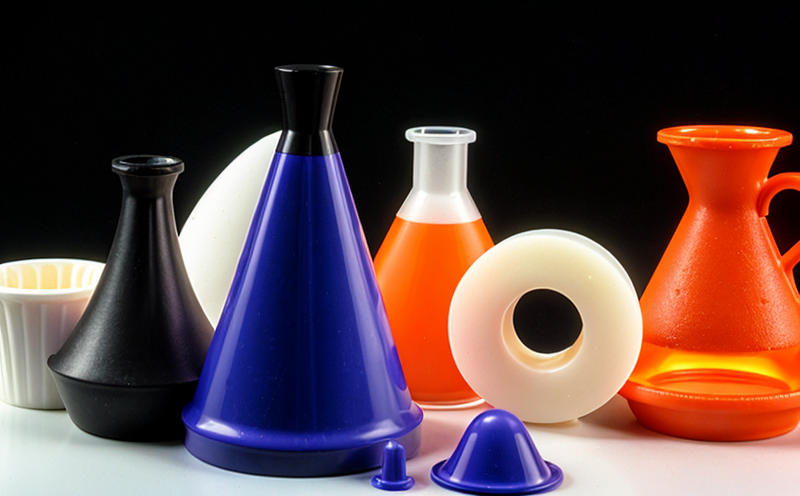JIS K7113 Impact Resistance Testing of Plastics
The JIS K7113 standard is an essential tool in evaluating the impact resistance properties of plastics. This test measures a plastic's ability to withstand sudden impacts without fracturing or breaking. Understanding and meeting these standards is crucial for industries where durability, safety, and performance are paramount. Quality managers, compliance officers, R&D engineers, and procurement teams rely on this testing method as part of their quality assurance processes.
The JIS K7113 standard specifies the procedure for determining the impact resistance of plastics using a pendulum impact tester. This test is particularly important in sectors such as automotive, electronics, construction, and medical equipment where materials need to withstand mechanical stresses without failure. The primary focus is on ensuring that the plastic's design can handle real-world conditions, which might include impacts from external objects or environmental factors.
The test involves a pendulum swinging down onto a specimen of the plastic material at a specific angle and velocity. The impact energy absorbed by the plastic specimen determines its resistance to impact. Specimens are typically shaped into notched specimens according to JIS K7113, as this shape enhances the sensitivity of the test.
The results provide critical information about the material's toughness, which is a key factor in selecting plastics for various applications. By understanding these properties, engineers can optimize designs and ensure that the chosen materials meet both performance requirements and safety regulations.
It is important to note that while JIS K7113 is widely recognized within Japan, it aligns closely with international standards such as ASTM D256 in terms of methodology. This ensures compatibility across different regions and industries. The testing process also involves precise specimen preparation, including cutting the material into standard sizes and shapes.
The application of this test extends beyond just plastic materials to include polymer additives. These additives can significantly affect the impact resistance properties of plastics, making it crucial to evaluate them alongside the base material. Understanding how different additives interact with each other and the base material is vital for optimizing performance in composite applications.
Compliance with JIS K7113 standards ensures that products meet regulatory requirements and industry expectations. This testing method provides a standardized way to measure impact resistance, ensuring consistency across different laboratories and facilities.
Applied Standards
| Standard Name | Description |
|---|---|
| JIS K7113: 2018 | Japanese Industrial Standard for Impact Resistance Test of Plastics |
| ASTM D256-19 | American Society for Testing and Materials standard for testing impact resistance |
| EN ISO 178:2003 | European Standard for tensile, flexural, and impact testing of plastics |
The JIS K7113 standard is one of the most widely used in Japan to assess the impact resistance properties of plastics. It specifies the procedure for the notched Izod impact test, which is a pendulum impact test that measures the amount of energy absorbed by a specimen when impacted with a swinging pendulum.
This standard ensures consistency and reliability in testing across different laboratories, making it easier to compare results internationally. The ASTM D256-19 and EN ISO 178:2003 standards are also frequently used for similar purposes, providing additional validation of test results through international harmonization.
Scope and Methodology
The JIS K7113 impact resistance testing method involves several key steps that ensure accurate and reliable results. The first step is specimen preparation, where samples are cut into standardized notched specimens with precise dimensions as per the standard.
- Specimen dimensions: 100 mm × 12.5 mm (width × thickness)
- Notch depth: 4 mm
- Length of impact area: 8 mm
The specimens are then mounted in a pendulum impact tester, which is calibrated to deliver the specified impact energy. The pendulum swings down onto the specimen at an angle of 15 degrees for brittle materials and 0 degrees for ductile materials.
During the test, the pendulum strikes the specimen, and the force absorbed by the material is measured in joules (J). The results are then compared against specified acceptance criteria to determine whether the sample meets the required impact resistance standards.
This standardized approach ensures that tests conducted in different laboratories yield consistent results. It also allows for easy comparison of test results with internationally recognized standards, such as ASTM D256 and EN ISO 178:2003.
Benefits
- Ensures compliance with industry standards
- Provides precise measurement of impact resistance properties
- Facilitates comparison between different materials
- Enhances product safety and reliability
- Supports optimization of material selection in design processes
- Aids in quality control by identifying non-compliant products early
- Promotes consistency across laboratories and facilities
The JIS K7113 impact resistance testing method offers a range of benefits that are essential for ensuring product quality and safety. By accurately measuring the impact resistance properties of plastics, this test helps industries meet regulatory requirements and enhance customer satisfaction.





